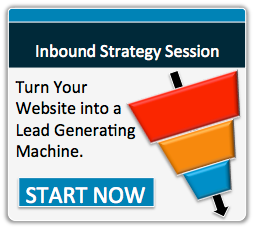 Do you face constant pressure to publish new content? Are you in panic mode, crunched for time, and looking for anything to publish because you don’t have a content strategy in place? You realize this is leading to less creativity and lower quality content, but what can you do? How can you put a plan in place that will boost your team’s productivity, lead to better content, address existing gaps, and effectively address your target customers? Here are five tips that will improve your inbound marketing strategy successfully.
Do you face constant pressure to publish new content? Are you in panic mode, crunched for time, and looking for anything to publish because you don’t have a content strategy in place? You realize this is leading to less creativity and lower quality content, but what can you do? How can you put a plan in place that will boost your team’s productivity, lead to better content, address existing gaps, and effectively address your target customers? Here are five tips that will improve your inbound marketing strategy successfully.
Implement a Production Process
To create a strategy that scale, you need a defined process to streamline content production. Using your content marketing strategy as a guide, assess your team of writers, editors, producers, and publishers to make sure they can create all the blog posts, infographics, videos, eBooks, and other content you will need to meet publication goals. When you look at the year ahead, will you need to bring more people on board or search for freelancers to meet expectations? A helpful organizational tool is to create an editorial calendar. Everyone on the content team should have access to a content calendar that details expectations for initial drafts, revisions, and final deadlines/ Set the team’s publishing frequency target and use this as a guideline for writing and editing deadlines. Another helpful tidbit is working drafts being kept in one location with a naming convention for files so that it’s obvious at a glance which version is the most current and who worked on it last. Utilize a CMS software solution such as Basecamp, SharePoint, or Igloo Software to make this process easier on yourself.
Optimize, Optimize, Optimize
The most successful websites are written not only for the reader, but also to incorporate best practices in search engine optimization and social media. In order to get the placement needed for consumers to see the site, the search engines also must find it relevant. Create the site, down to each page, with the goal of welcoming them. Correct meta information and keywords used in the right places, the right number of times will net the results you’re after.
Less Is More
Don’t try to cram too much information onto one landing page, instead divide topics onto specific individual pages. If you offer three different types of blenders, design a page for each blender. That way if someone is looking for a blender with specific features they will get pointed to exactly the right landing page. This will increase relevance in Google’s eyes, which in turn will improve your organic placement, and that can yield more leads and sales.
Share the Knowledge
Blogging has become the standard in building reputation, credibility, and page count. A blog is an opportunity to showcase expertise, solutions, and offerings. But be careful! A blog is a platform for companies to educate and share knowledge, not for the location for the hard sell. Keep the sales pitch subtle and to the bottom of the blog post. Be sure your blogs include eye-catching photos or illustrations along with bulleted lists of information for an easier read.
Plan for the Future
As your company scales its content creation, remember that content marketing is a growing and changing field, and you’ll always need to be adapting. Allow team members time to keep up with SEO, social media, PR, online marketing, and blogging best practices and trends. Hubspot Product Marketing Associate Rachel Sprung suggests spending at least 30 minutes a week to stay abreast of new marketing trends. The logistics of creating and successfully scaling a content marketing strategy can seem daunting, but the role of content continues to increase in the marketing big picture. Taking these steps to understand current and future goals, implement reliable processes, and plan for smart growth will ensure an intelligent approach to meeting content marketing challenges.
For information of inbound marketing, click on the strategy session below:

